Text
A walnut sheath project for a kitchen knife.
My daughter Aurora has a (beautiful and wonderfully sharp) kitchen knife that has a lost sheath, so I made a replacement sheath from a 1″ thick piece of walnut that had really nice figure. Here is the final result
The sheath has two halves, with a routered out section in the interior that the knife blade fits into. As this was a one time project, I didn’t make a template for that interior…

View On WordPress
#brad point drill bits#Danish oil#epoxy glue#hand plane#hand saw#knife#magnets#paste wax#planer#router#sheath#table saw
0 notes
Text
Triangle area problem: REVISITED.
[Click here for a PDF version of this post]
On LinkedIn, James asked for ideas about how to solve What is the total area of ABC? You should be able to solve this! using geometric algebra.
I found a couple ways, and this last variation is pretty cool.
fig. 1. Triangle with given areas.
To start with I’ve re-sketched the triangle with the areas slightly more to scale in fig. 1, where areas \( A_1 =…
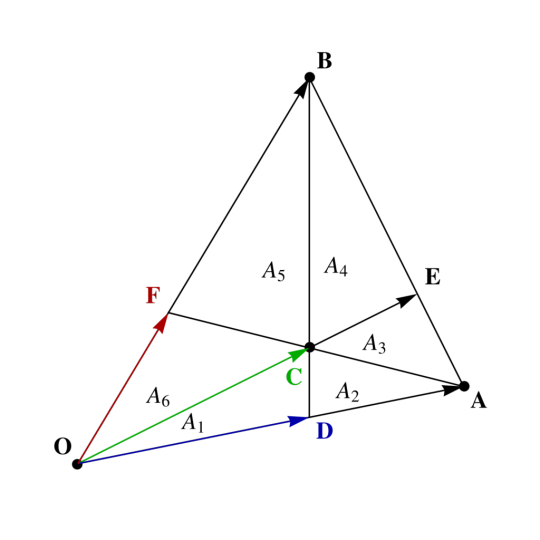
View On WordPress
0 notes
Text
Triangle area problem
[Click here for a PDF version of this post]
On LinkedIn, James asked for ideas about how to solve What is the total area of ABC? You should be able to solve this! using geometric algebra.
I found one way, but suspect it’s not the easiest way to solve the problem.
To start with I’ve re-sketched the triangle with the areas slightly more to scale in fig. 1, where areas $A_1, A_2, A_3, A_5$ are…

View On WordPress
0 notes
Text
Speaker stands for Sofia's office.
Sofia took down the curtain tie downs on the window casings, which left a small hole in each. She also had a pair of new speakers that have been taking space on her desk that she thought would go well in exactly those positions, and commissioned me to make her a couple speaker stands. Looking at them in retrospect, they have a bit of a Star Trek voyager look:
Each has a 5.5″ inset circular…
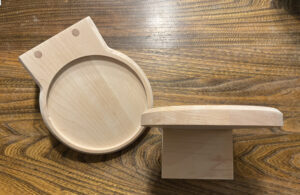
View On WordPress
0 notes
Text
Bivector transformation, and reciprocal frame for column vectors of a transformation
[Click here for a PDF version of this and previous two posts]
The author of a book draft I am reading pointed out if a vector transforms as
\begin{equation}\label{eqn:adjoint:760}
\Bv \rightarrow M \Bv,
\end{equation}
then cross products must transform as
\begin{equation}\label{eqn:adjoint:780}
\Ba \cross \Bb \rightarrow \lr{ \textrm{adj}\, M }^\T \lr{ \Ba \cross \Bb }.
\end{equation}
Bivectors…
View On WordPress
0 notes
Text
Simplifying the previous adjoint matrix results.
[Click here for a PDF version of this (and the previous) post]
We previously found determinant expressions for the matrix elements of the adjoint for 2D and 3D matrices \( M \). However, we can extract additional structure from each of those results.
2D case.
Given a matrix expressed in block matrix form in terms of it’s columns
\begin{equation}\label{eqn:adjoint:500}
M =
\begin{bmatrix}
\Bm_1 &…
View On WordPress
#adjoint matrix#column vector#cross product#dot product#matrix#pseudoscalar#reciprocal frame#row vector#transpose#wedge product
0 notes
Text
Computing the adjoint matrix
[Click here for a PDF version of this post]
I started reviewing a book draft that mentions the adjoint in passing, but I’ve forgotten what I knew about the adjoint (not counting self-adjoint operators, which is different.) I do recall that adjoint matrices were covered in high school linear algebra (now 30+ years ago!), but never really used after that.
It appears that the basic property of the…
View On WordPress
0 notes
Text
A hardcopy of my book for myself.
I hadn’t printed a copy of my book for myself for about 4 years, and since I’ve added a lot since then, I wanted a new version to mark up. This new version (V0.3.5) is now up to 313 pages, whereas my May 2019 V0.1.15-6 version weighed in at a much skinnier 258 pages.
This time, so I could see what it looked like, I got myself a hardcover copy:
The hard cover has a nice feel and thickness, and…

View On WordPress
0 notes
Text
A router table extension for my table saw.
I’ve got a nice little job site table saw, but my “workshop” is an 8×10 shed (approximately), and space is at a premium, so I don’t have space for a lot of bigger wood working tools. I saw a number of YouTube videos showing various router table extensions for their table saws, and I’ve started building one for myself. I’d like to avoid such a modification that drills into the saw frame itself,…

View On WordPress
0 notes
Text
An absurd COBOL library: 2D Euclidean GA
I’ve achieved a new pinnacle of obscurity, and have now written a rudimentary COBOL implementation of a geometric algebra library for \( \mathbb{R}^2 \) calculations.
Who will use this? Absolutely nobody. Effectively, nobody knows geometric algebra. Nobody wants to know COBOL, but some do. The union of those two groups is vanishingly small (probably one: argued below.)
I understand that some…

View On WordPress
0 notes
Text
V0.3.5 of Geometric Algebra for Electrical Engineers (and temp hardcover price drop)
Yes, I just published an update last week, but here’s another one.
Temporary price drop on hardcover.
It’s been 4 years since I printed a copy of the book for myself to mark up and edit. In particular, having added some vector calculus identities and their geometric algebra equivalents to chapter II, it messes up the flow a bit, and I’d like a paper copy to review to help figure out how to…
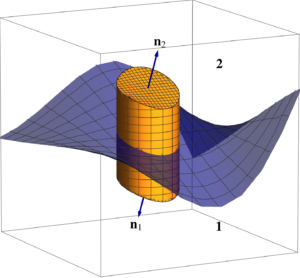
View On WordPress
#curl as wedge product#Geometric Algebra for Electrical Engineers#hardcover#price drop#spherical coordinates#vector calculus identities
0 notes
Text
Multilanguage debugging in lldb: print call to function.
There probably aren’t many people that care about debugging multiple languages, but I learned a new trick today that is worth making a note of, even if that note is for a future amnesiatic self.
Here’s a debug session where C code is calling COBOL, but in the COBOL frame, the language rules prohibit running print to show the results of a C function call (example: printf, strlen, strspn, …)
To…
View On WordPress
0 notes
Text
Some new tmux tricks (for me)
I’ve been using tmux since RHEL stopped shipping screen by default. We now use Oracle Linux at work, not RHEL, and perhaps Oracle Linux ships screen, but I’m unlikely to switch back now.
I blundered upon a tmux book at the Toronto Public Library today. It’s a little book, and most of what is interesting looking to me, is in the first couple chapters. Here are some notes.
tmux sessions.
I…

View On WordPress
0 notes
Text
A new version of my book is now published. The free PDF and the leanpub versions are available now. The paperback and hardcover versions should be available on Amazon within the week.
What has changed:
V0.3.2 (Dec 8, 2023)
Add to helpful formulas: Determinant form of triple wedge.
Add figure showing the spherical polar conventions picked.
Add a problem showing that \( (e^x)’ = x’ e^x \) only…
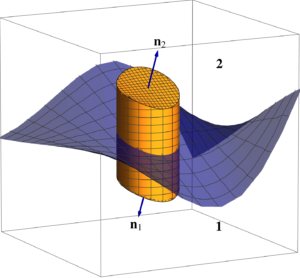
View On WordPress
#bivector commutation#derivative#exponential derivatives#Geometric Algebra for Electrical Engineers#multivector potential#repeated wedge product#spherical polar coordinates
1 note
·
View note
Text
Potentials for multivector Maxwell's equation (again.)
[Click here for the PDF version of this post.]
Motivation.
This revisits my last blog post where I covered this content in a meandering fashion. This is an attempt to re-express this in a more compact form. In particular, in a form that is amenable to include in my book. When I wrote the potential section of my book, I cheated, and didn’t try to motivate the results. My cheat was figuring out the…
View On WordPress
#bivector#cross product#curl#divergence#dot product#Geometric Algebra#grade selection#gradient#Lorentz gauge#multivector#potential#pseudoscalar#scalar#scalar potential#trivector#vector#vector potential#wedge product
0 notes
Text
Derivatives of spherical polar vector representation.
[Click here for a PDF version of this post]
On discord, on the bivector server, ‘not a good username’ asked a question that I really liked.
It’s a question that nagged me before too, but I hadn’t taken the time to puzzle through it properly.
The main character in this question is the spherical polar form of a radial vector, which has the…
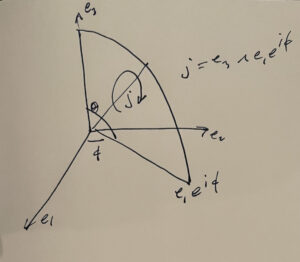
View On WordPress
#bivector#derivatives#Geometric Algebra#partial derivatives#power series#spherical polar coordinates
1 note
·
View note
Text
Potentials in geometric algebra.
[Click here for a PDF version of this post]
Conventional formulation.
The idea behind introducing the scalar potential \( \phi \) and vector potential \( \BA \) is that we can impose a constraint on the form of our observable fields \( \BE, \BB \), (or \( \BD, \BH \)), that reduces the complexity and coupling of Maxwell’s equations. These potentials are not unique, but the types of allowed…
View On WordPress
#bivector#curl#divergence#dot product#electric field#Faraday field#gauge transformation#Geometric Algebra#grade selection#gradient#Lorentz gauge#magnetic field#Maxwell&039;s equation#multivector potential#pseudoscalar#scalar potential#space time gradient#trivector#vector#vector potential#wedge product
0 notes